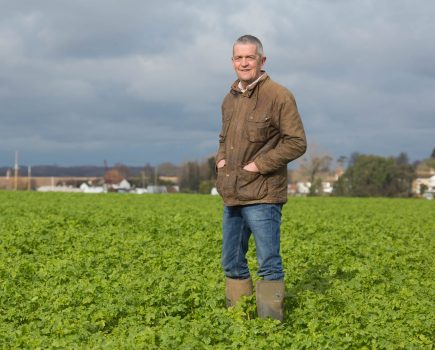By Martin Lines
With a changing climate, the unpredictability of our weather has certainly been bad news for food this year and not for the best for farming. Predictions were always that it’d get warmer, but lately we’re seeing the cold side of the weather fronts – it’s anybody’s guess these days.
As combines are revved up to dive into harvesting, it looks like it’s going to be a harvest of the good, the bad, the ugly and the damn-right disappointing – and that’s if you’re lucky and managed to keep your crops alive over winter and spring. What’s the potential impact of one of the smallest wheat harvests for many years?
The quality of the harvest is going to be critical to add value. With so much spring barley in the ground across the country, the potential for good premiums on malting barley will be slim and much of it will probably end up in the feed bin, increasing pressure to the feed-wheat price. I think I can speak for most of us when I say we’ll be pleased to see harvest completed and a new season start.
It’s been hard during the past few months, seeing so many fields with bare areas, the light flushes of blackgrass and wild oats creeping in. As a result, some are going to find it very difficult to manage their cash flow in the year ahead and to invest into next year’s crop. If this is you, you’re not alone; if you’re under pressure, please reach out and speak to somebody. To those already gathering in their harvests: good luck, and I’m hopeful it’ll be fruitful for you.
With many crops established in challenging conditions and fertilising/spraying applications made on sodden fields, there’s a lot of soil damage that requires remedying. For some this means reaching for the plough or cultivator to disturb the soil, and for others it’ll be targeted approaches for minimum disruption to the soil microbiome. The healthier our soil is, the more resilient it is to extreme weather impacts, and therefore more able to protect and nurture our crops.
We can only hope that harvest is over swiftly and at little cost, giving us a wide window for fixing soil health and drainage to prepare for what we hope will be an easy autumn for planting.
The issue of field drainage is becoming increasingly important for those of us on heavy land or whose drainage systems are coming to the end of their lives. Regular mole draining can keep things going but it’s not a long-term fix. How we manage to invest in drainage schemes to keep our soils in good condition is going to be very challenging, but necessary to enable us to plan and harvest at the best times.
Investment in infrastructure is required for farmers – having access to government-backed funding that gives long-term returns and improvements is becoming increasingly important. With many environmental challenges laid at the farmers’ feet, we may have to draw upon support from SFI with which we can implement some improvements and be recognised for those we’re already doing.
SFI actions such as tree planting and creating and maintaining hedgerows will support healthy soil drainage. However, how we invest in improvements at the same time as investing in production is still something the supply chain and government must continue to address.
Not only will there be a frenzy of activity in the countryside as harvests are reaped during the next few months, there’ll also be a hive of activity in Westminster as everyone jostles to engage with the new Prime Minister, Secretaries of State, MPs and civil servants.
We can only hope the new government engages with farmers to discuss practical solutions for all our landscape can produce and that society needs – which is by no means only food production. With much talk of new infrastructure development, access to the countryside and crop production may face many challenges in the years ahead. Let’s hope the new government gives agriculture the support it requires and deserves, as we have much to offer in delivering nutritional security, climate change mitigation and nature recovery.
This article was taken from the latest issue of CPM. For more articles like this, subscribe here.
Sign up for Crop Production Magazine’s FREE e-newsletter here.




